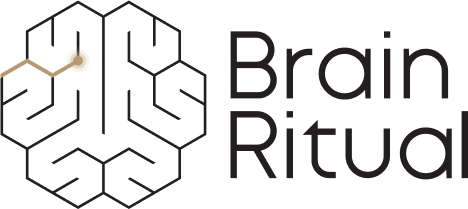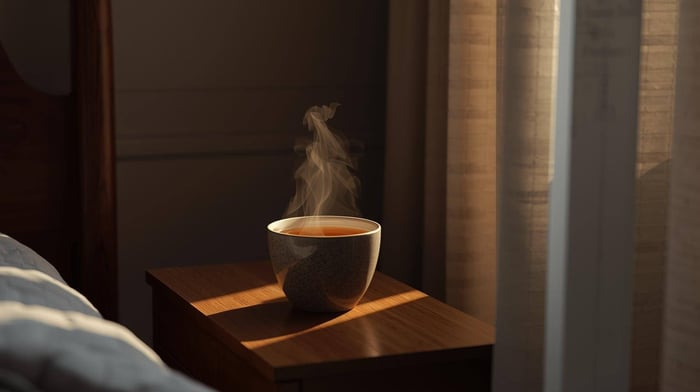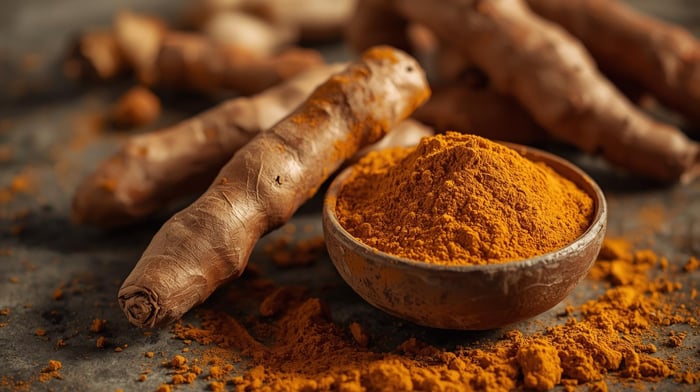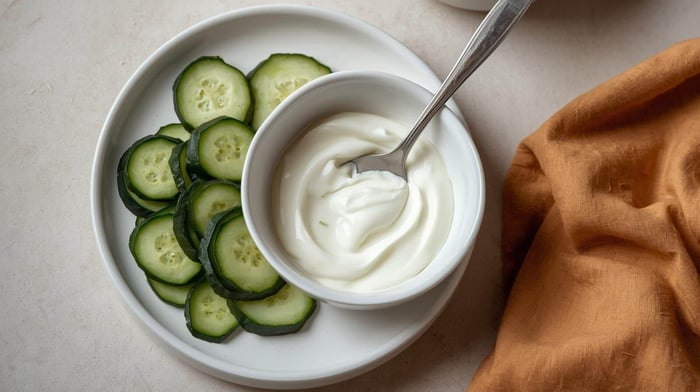Table of Contents
At a Glance
|
A nice cup of warm tea is one of the first things many people reach for during a migraine. It can feel soothing, help you stay hydrated, and give you a calm moment to breathe.
This guide looks at the links between migraine tea and the ways people use it as part of their routine. Your response may be very different from someone else’s. For example, caffeine helps some people but bothers others. Because strong flavors or large servings can sometimes feel overwhelming, lighter, caffeine-free herbal teas are often a gentler place to start. The key is to keep it simple, try small amounts first, and note how your body responds.
We’ll take a closer look at the kinds of teas people often turn to, the things to be cautious about, and how you can make tea part of your wider migraine routine. You may also want to explore our guide on how to get rid of a migraine at home for broader strategies that fit alongside what you’ll find here. Along the way, you’ll discover practical tips on timing, brewing methods, and how to track what works best for you.
What People Mean by Migraine Tea
When people talk about migraine tea, they usually mean more than just the drink itself. It is often seen as a whole experience. Tea can be part of a soothing ritual. A warm cup helps you pause, slow down, and step away from noise or bright light. That moment of calm can matter as much as the ingredients.
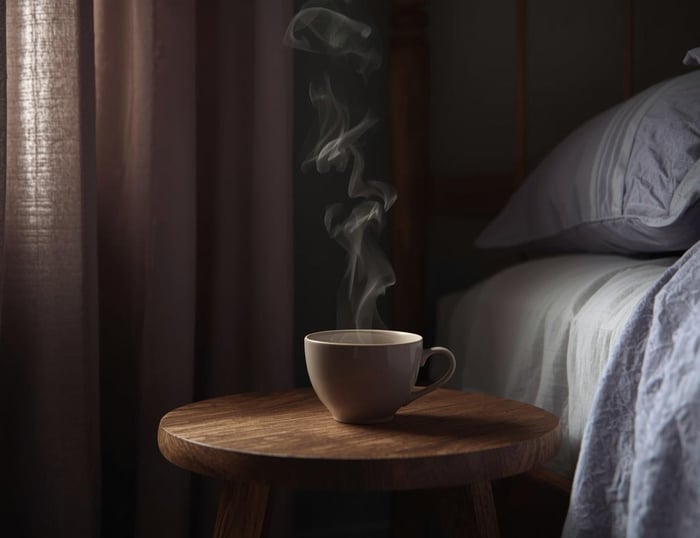
Hydration is a big part of the picture. Even mild dehydration can make migraine symptoms feel worse. A simple cup of tea, especially when it is caffeine-free, supports fluid intake. You can also think about electrolytes, since balance between sodium, potassium, and magnesium helps your brain and body function well. Another option at the early onset stage of a migraine is a drink of Brain Ritual®, which provides electrolytes, ketone bodies (D-beta-hydroxybutyrate), and other nutrients that may help support your routine for migraine management.
The type of tea, its temperature, and the timing all change the experience. For example:
A lightly steeped herbal tea may feel calming before rest.
A small cup of green tea earlier in the day offers a touch of caffeine that some people find helpful.
Even the choice between warm or cooled tea can change the experience, so it helps to notice what feels most supportive for you.
The Role of Hydration and Comfort
During a migraine, even small shifts in comfort can make a significant difference. A warm drink encourages slow, steady sipping, which helps with hydration and can be easier to tolerate than large gulps of cold water. The gentle warmth itself may also ease muscle tightness and give you a calming focus point when other senses feel overloaded. Studies have found that higher daily water intake is associated with lower migraine frequency, duration, and severity (Khorsha et al. 2020).
Hydration supports how your brain and body function, and tea can be a practical way to keep fluids steady throughout the day. For some, alternating plain tea with water works well, while others prefer herbal blends that are naturally caffeine-free. The aim is not volume but balance, with steady sips and simple choices usually being the most effective.
Keeping things simple helps. Avoid heavy syrups, strong flavorings, or lots of sweeteners, as these can sometimes feel too stimulating or unsettling during migraine. Gentle, light flavors often work best, and a modest serving is usually easier to tolerate.
Commonly Tried Teas for Migraine Support
Ginger tea
Ginger is one of the most popular choices for migraine. A warm cup may help support nausea relief and ease stomach discomfort. Ginger also contains natural compounds that support digestion. You can use a few fresh slices in hot water or a simple bagged tea. A shorter steep time often gives a milder taste that is easier to tolerate during migraine.
Peppermint tea
Peppermint has a cooling aroma that many people find refreshing. It may help ease queasiness and tension. Peppermint leaves contain menthol, which supports a soothing, cooling effect. If you are prone to reflux, though, it can sometimes make symptoms worse, so try a small amount first and see how you respond.
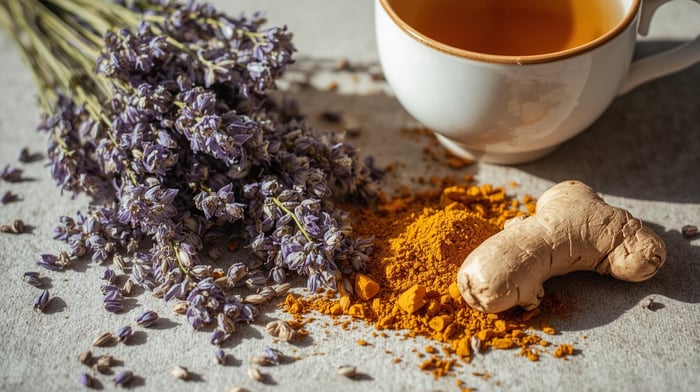
Chamomile tea
Chamomile is often used in the evening as it may help encourage relaxation before rest or sleep. It contains natural plant compounds that support a calming effect. A lightly brewed cup is usually enough. Keeping it gentle avoids an overly floral or strong flavor.
Green tea
Green tea contains a light amount of caffeine. This can feel helpful for some people, especially earlier in the day, but may be a trigger for others. It is also rich in natural antioxidants that support overall health. If you are sensitive to caffeine, try a smaller cup or opt for decaffeinated blends.
Lavender tea
Lavender tea is sometimes chosen for its light, floral taste and calming qualities. Most migraine research on lavender looks at the aroma rather than the tea itself. One study found that inhaling lavender essential oil significantly reduced headache severity (Sasannejad et al. 2012). While tea has not been studied in the same way, some people still enjoy it as part of a calming routine. A lightly brewed cup is usually enough, as stronger infusions can feel too perfumed for some tastes.
Turmeric tea or golden milk
Turmeric gives a warming, earthy flavor, and some people enjoy it as part of a golden milk–style drink. It contains curcumin, a compound studied for its antioxidant and anti-inflammatory properties. Modest amounts of Turmeric for migraines support are usually best, since large servings or strong blends can be hard on digestion. If you add black pepper to boost absorption, keep it minimal to avoid irritation.
Hibiscus tea
Hibiscus has a tart, fruity flavor and can be enjoyed warm or iced. Some people find it refreshing, but it may affect blood pressure in sensitive individuals. If you are unsure, start with a small cup and note how you feel.
These teas are some of the most common starting points, but the best choice is always the one that feels gentle, comforting, and right for you.
Teas to Be Cautious With
Not every tea will feel supportive during a migraine. Some blends or serving sizes can make symptoms feel worse, similar to how certain foods can act as triggers. It helps to be aware of a few common culprits with tea as well:
Strong black tea
Very strong black tea or multiple cups of other caffeinated teas, such as green or oolong, can bring on jitters, disrupt sleep, or even make headaches feel more intense for some people. If you enjoy black tea, try a lighter brew or limit the number of cups. Decaffeinated black tea is also an option if you want the familiar flavor without the extra caffeine.
Fermented teas
Fermented teas, such as kombucha or aged varieties, are usually higher in histamines. If you know you are sensitive to histamine, these options may be best avoided during migraine. If you like the idea of a refreshing drink, a simple herbal iced tea can be a gentler alternative.
Licorice root blends
Licorice root is sometimes added to herbal blends. It can raise blood pressure if used in larger amounts, so check labels and be cautious if you manage hypertension. For people with migraine, changes in blood pressure can sometimes influence how symptoms feel, so it is best to try only small amounts or choose blends without licorice if you are unsure. If you want a naturally sweet flavor, rooibos or chamomile can be gentler alternatives.
Heavily flavored or sweetened teas
Teas with lots of added flavorings, syrups, or sweeteners can sometimes feel too stimulating or unsettled during migraine. Strong artificial flavors may also mask your ability to notice how your body responds to the tea itself. If you enjoy a touch of sweetness, a small drizzle of honey can be a gentler choice.
Although these teas may be worth limiting, what matters most is noticing your own patterns and making choices that feel gentle and supportive for you.
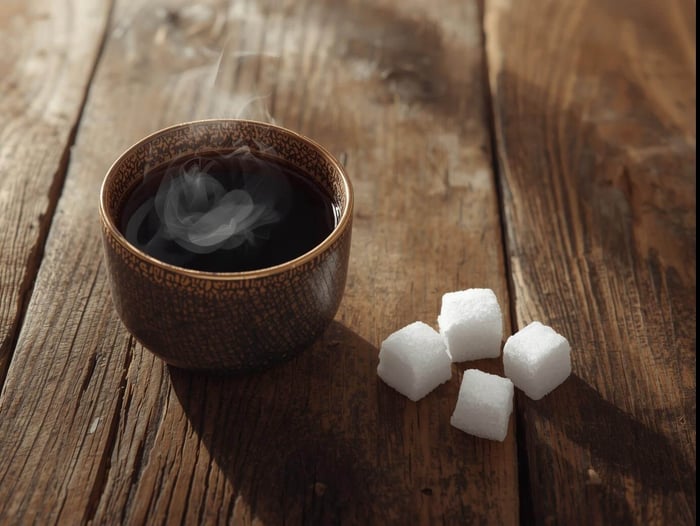
Practical Tips for Trying Tea
Start small: Begin with a modest serving and a shorter steep time. This keeps flavors gentle and makes it easier to notice how you respond.
Timing is everything: A calming herbal tea can work best in the evening, while a light green tea may feel helpful earlier in the day if caffeine feels supportive.
Sip steadily: Slow, steady sips are often easier to tolerate than large gulps, especially when you feel unsettled.
Keep hydration balanced: Alternate tea with water throughout the day to stay well hydrated without overdoing caffeine.
Keep things simple: Avoid heavy sweeteners, syrups, or strong flavorings that may feel overwhelming during migraine.
Pair gently with food: If nausea is an issue, having a small, migraine-friendly snack alongside your tea may help.
Tracking What Works for You
Since migraine affects everyone differently, it helps to note how various teas affect you. Making small notes after each cup can make patterns much easier to spot over time.
Keep it simple: Jot down the type of tea, how strong you made it, and when you drank it.
Notice your body’s response: Write a quick note on whether it felt calming, unsettling, or made little difference at all.
Look for timing patterns: Some teas may feel more supportive to you before rest, while others work best earlier in the day.
Review over weeks, not days: A single cup can be misleading, unless it brings on a strong or clearly negative effect. Looking back over several weeks makes trends easier to see.
Pair with your other notes: If you are already tracking sleep, hydration, and foods, then adding your tea notes will help build a fuller picture.
By keeping the process simple, you’ll gain a clearer sense of which teas feel most supportive for you and which ones may not be worth continuing.
Where Tea Fits with Other At-Home Support
Tea can be readily included as part of your migraine support routine, but it usually works best when combined with other simple strategies. It helps to think of it as one piece of the bigger picture. Other things to consider as part of this routine may include:
Creating a calm setting: Pair your cup of tea with a quiet space, soft lighting, and ideally a short break away from screens.
Try temperature therapy: Some people find a cold compress soothing, while others prefer gentle warmth around the neck or shoulders. Both approaches can be helpful, depending on what feels best for you.
Relaxation: Breathing exercises, gentle stretches, or lying down in a comfortable position can all add to the sense of relief.
Keep sleep in mind: Herbal teas before bed may help encourage rest, while avoiding caffeine later in the day supports a steadier sleep pattern.
Think about nutrition: Your tea routine can sit alongside other supportive habits, such as having light snacks like fruit, yogurt, or crackers if you tolerate them, or other simple foods that feel easy on your system. It may also help to avoid heavy, greasy, or highly processed foods that can be harder to manage during migraine.
Together, these approaches help create a calming environment that makes migraine easier to manage. Tea is just one part of the picture, but it can play a meaningful role when combined with other supportive habits.
Bringing It All Together
If you are exploring ways to make your migraine routine simpler, Brain Ritual® can be a helpful addition. It combines nutrients like riboflavin, CoQ10, and L-carnitine, along with electrolytes, in a single daily drink. Designed to fit alongside everyday choices such as hydration, light meals, and calming habits like tea, it offers a structured way to support your routine without adding extra complexity.
Disclaimer: Brain Ritual® is a medical food for the dietary management of migraine and is not intended to diagnose, treat, cure, or prevent any disease. This content is for informational and educational purposes only and is not intended as medical advice.
Common Questions
What is the best tea for migraines?
There is no single best tea for migraines, since everyone’s response is different. Ginger tea is often chosen for nausea, peppermint tea for queasiness, and chamomile tea for relaxation. Some people also look for organic migraine relief tea blends, which avoid additives and focus on clean ingredients. Others explore options that are packaged as the best tea for headaches, since there is overlap between headache and migraine support.
Can caffeine in tea help migraines or make them worse?
Caffeine has a complicated role in migraine. In small amounts it can narrow blood vessels and sometimes ease pain, which is why it appears in some headache remedies. Too much caffeine, or sudden withdrawal, may have the opposite effect. A little caffeine may feel helpful to some, while others do better with decaffeinated or herbal teas.
What is the connection between green tea and migraine?
Green tea is rich in catechins such as EGCG. Human studies have shown these antioxidants can reduce oxidative stress (Sugita et al. 2016). This is one reason the green tea migraine link often comes up in both research and everyday routines. For some people, small amounts of caffeine can feel supportive, while for others it may act more as a trigger. Tea’s antioxidant profile makes it an interesting part of dietary discussions around migraine, and decaffeinated green tea can still provide many of the same antioxidant benefits without the stimulant effect.
Is cinnamon good for migraines?
This question often comes up when people explore herbal blends. Cinnamon contains compounds with antioxidant and anti-inflammatory properties, which are of interest in migraine biology. Evidence is still limited, and strong cinnamon flavors can sometimes irritate digestion. If you want to try cinnamon in tea, start with small amounts, use organic cinnamon if possible, and note how your body responds.
Final Thoughts
Tea can be a simple and comforting part of your migraine routine. Whether it is ginger, chamomile, peppermint, or even a little green tea, each option brings its own qualities. What matters most is how your body responds. Keeping servings modest and noticing how tea influences your migraine patterns over time can help you discover what feels most supportive.
Although no tea is a cure, the ritual of preparing and sipping a warm drink can ease stress, support hydration, and give you a moment of calm when you need it most. Alongside other habits such as steady sleep, balanced nutrition, and light relaxation, tea can become a natural complement to a broader self-care routine.
If you are looking for a structured way to support your migraine management with nutrients beyond what tea provides, Brain Ritual® is designed to complement these daily habits. It brings together carefully chosen compounds in a simple routine that can fit alongside calming strategies like tea.

